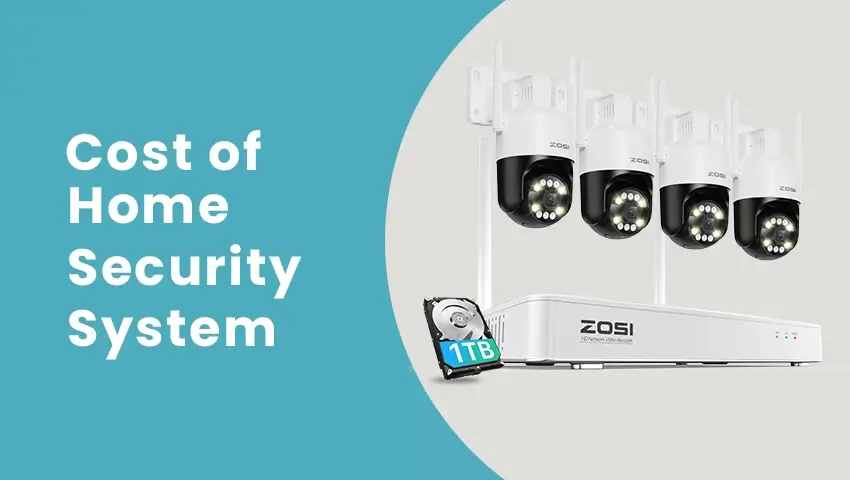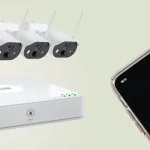Home security has evolved from luxury to necessity. With increasing concerns about break-ins, package theft, and home safety, more people are considering installing home security systems. However, one of the most common questions homeowners ask is: How much does a home security system really cost?
The truth is, the price tag isn’t always straightforward. Costs can vary widely depending on the type of system, features, installation method, and monitoring options. In this article, we’ll break down all the possible costs involved in getting a home security system so you can make an informed and budget-conscious decision.
Contents
Types of Home Security Systems and Their Cost Range
1. DIY Security Systems
These are becoming increasingly popular due to their flexibility and lower upfront costs. Brands like Ring, SimpliSafe, and Wyze offer kits starting as low as $100 and going up to around $500 depending on the number of devices and features included. These systems often offer optional monthly monitoring plans that range from $10 to $30.
2. Professionally Installed Systems
Traditional security companies like ADT or Vivint provide more comprehensive systems with expert installation and support. These systems can cost anywhere between $600 and $2,000 for equipment and installation. Monthly monitoring fees often range from $30 to $60, with multi-year contracts.
3. Wired vs. Wireless Systems
Wired systems tend to have higher installation costs and are less flexible if you move. Wireless systems are easier to set up and usually cheaper in the long run. However, wired systems are generally more stable and don’t rely on batteries or Wi-Fi.
| System Type | Initial Cost | Monitoring Fee (Monthly) | Installation Cost |
|---|---|---|---|
| DIY Wireless Systems | $100–$500 | $0–$30 | Usually Free |
| Professional Wireless Systems | $600–$1,500 | $30–$60 | $100–$300 |
| Professional Wired Systems | $1,000 or more | $30–$60 | $200–$500 |
Key Cost Factors to Consider
1. Equipment Costs
This is often the largest portion of your initial investment. Basic kits might include a base station, a few entry sensors, and a motion detector. More advanced systems include indoor/outdoor cameras, smart locks, doorbell cams, smoke detectors, and more. A comprehensive setup can easily exceed $1,000.
2. Installation Fees
DIY systems are typically designed for easy self-installation, which eliminates this cost. On the other hand, professional installation can cost between $100 and $500 depending on system complexity.
3. Monitoring Fees
Professional monitoring ensures someone is always watching your home for intrusions or emergencies. Costs range from $10/month for basic DIY systems to $60/month for premium 24/7 monitoring with video verification and police dispatch.
4. Smart Home Integration
If you want your security system to integrate with devices like Alexa, Google Assistant, or smart lighting, you might pay more for compatible gear or app subscriptions. Some brands offer these features free, while others charge a premium.
5. Cloud Storage
Storing security footage in the cloud often requires a subscription. Costs can range from $3/month per camera to $30/month for unlimited storage and advanced features.
Hidden or Long-Term Costs
1. Contracts and Cancellation Fees
Many professional systems require multi-year contracts. Canceling early can result in high termination fees. Always read the fine print before signing up.
2. Maintenance and Battery Replacement
While DIY systems reduce service costs, users are responsible for battery changes and hardware issues. This can add up over time if you have a large number of devices.
3. Upgrades
Technology evolves fast. You might want to upgrade your system in a few years to access new features or better cameras. Factoring in this potential cost can help avoid surprises.
4. Data and Power Usage
Cloud-based systems that constantly upload video can consume significant internet bandwidth. Wired systems add slightly to your electricity bill, though typically minimal.
Cost Comparison: DIY vs Professional Security Systems
| System Type | Pros | Cons |
|---|---|---|
| DIY | Lower cost, no contracts, flexible, portable | Limited support, potential for user error, less robust |
| Professional | Full service, better support, higher-end hardware | Higher upfront and recurring costs, contract restrictions |
A small apartment or rental might be best served with a DIY system. A large home or family residence might benefit more from professional installation and monitoring.
How to Save Money on a Home Security System
- Look for Bundles or Sales: Many companies offer deals during holidays or major sales events.
- Use Only What You Need: Avoid paying for extra devices or services you won’t use.
- Install It Yourself: If you’re comfortable with basic tech setup, go DIY.
- Trial Periods: Some companies offer money-back guarantees or trial periods — test before committing.
Are Home Security Systems Worth the Investment?
A home security system isn’t just a gadget — it’s peace of mind. Insurance companies may offer discounts if you have one installed. You also get real-time awareness of what’s happening around your home.
According to recent studies, homes without security systems are 3 times more likely to be broken into. Even a visible camera or sign can be enough to deter potential intruders.
Long-term, the investment pays off through theft prevention, damage reduction, and increased property value.
FAQs
1. Can I use a home security system without paying a monthly fee?
Yes. Many DIY systems offer free self-monitoring and local video storage.
2. Do I need Wi-Fi for my security system?
Most modern systems use Wi-Fi, but wired systems or those with cellular backup don’t necessarily require it.
3. What if I move?
DIY systems are portable and easy to uninstall and reinstall. Professional systems may involve extra moving fees.
4. Are cheaper systems reliable?
Budget systems can be reliable but might lack advanced features like AI detection or HD video quality.
Conclusion
The cost of a home security system varies significantly based on your needs, home size, and whether you prefer professional or DIY installation. By understanding the components that drive costs — from equipment to monthly monitoring — you can choose a system that fits your budget without compromising on safety.
Whether you’re safeguarding your home, family, or peace of mind, the right security system is a worthwhile investment. Start with what you need most, and scale as your needs evolve.



